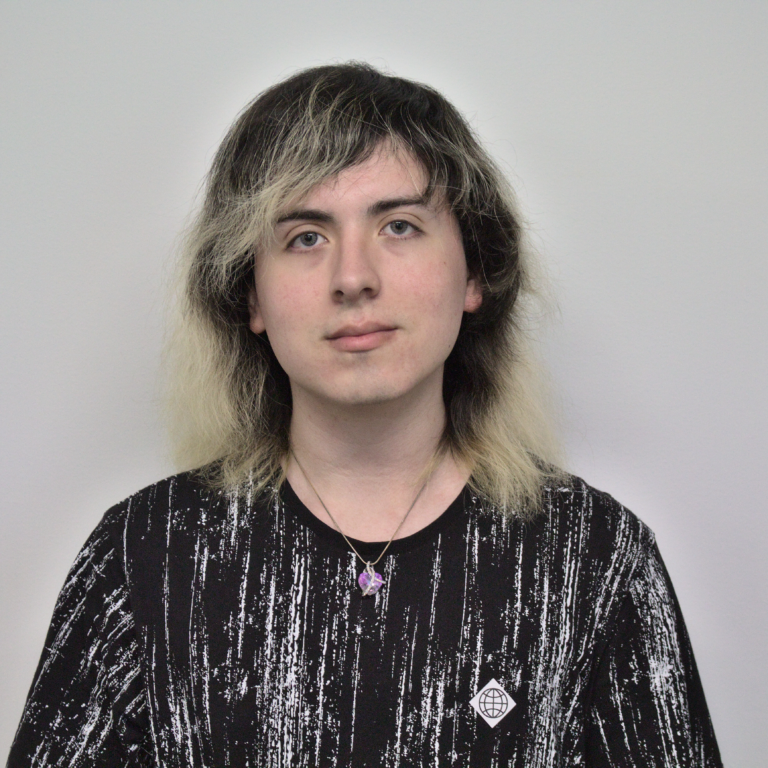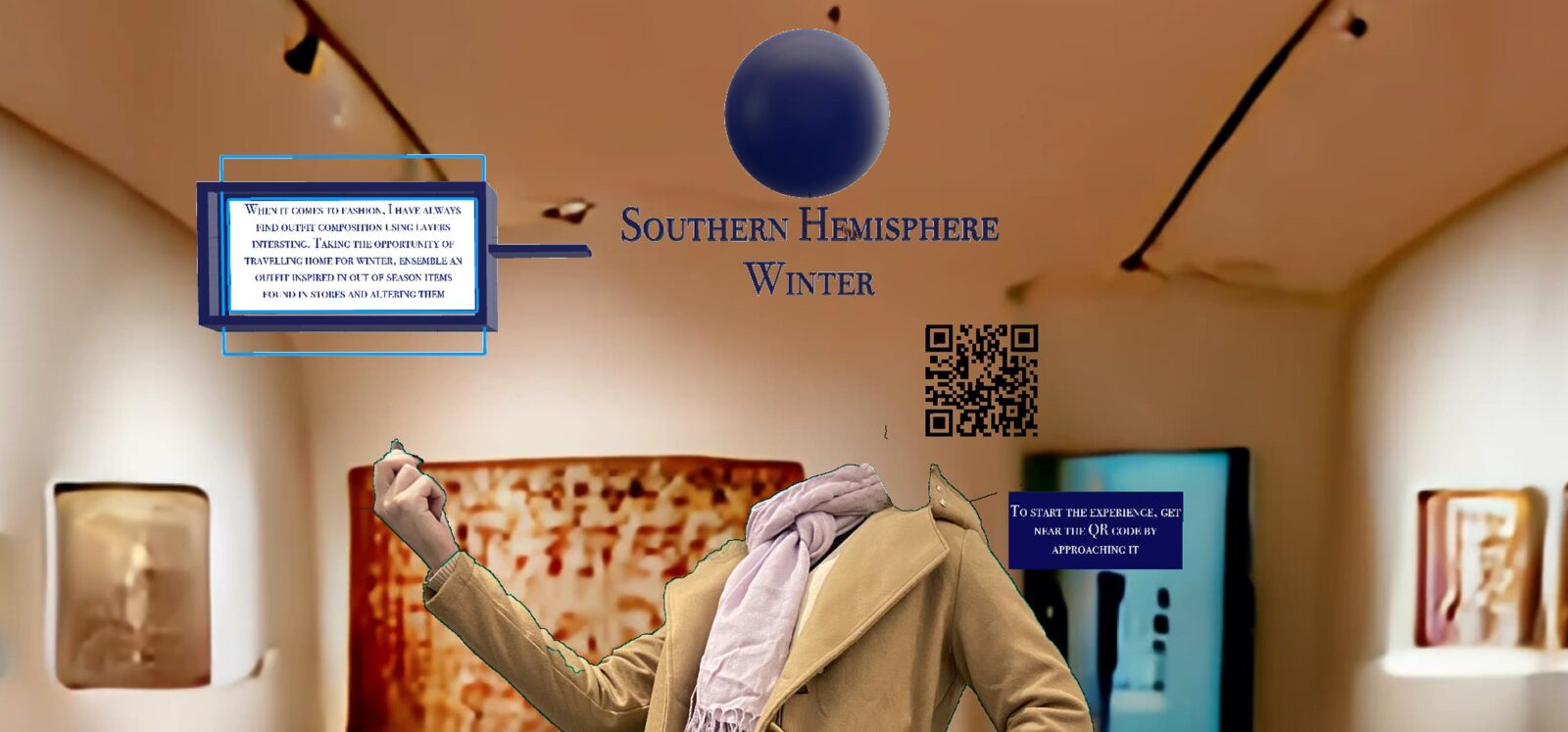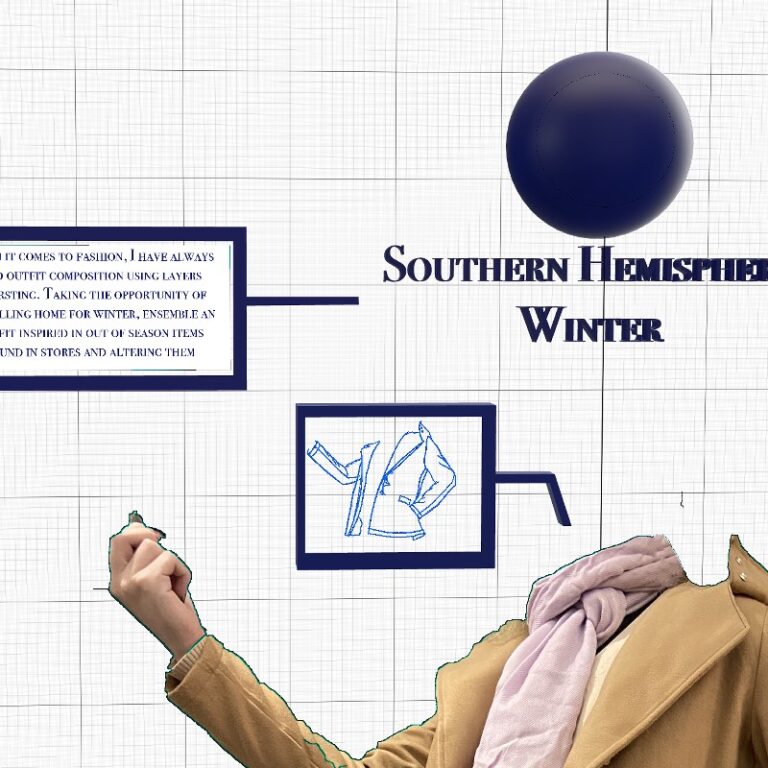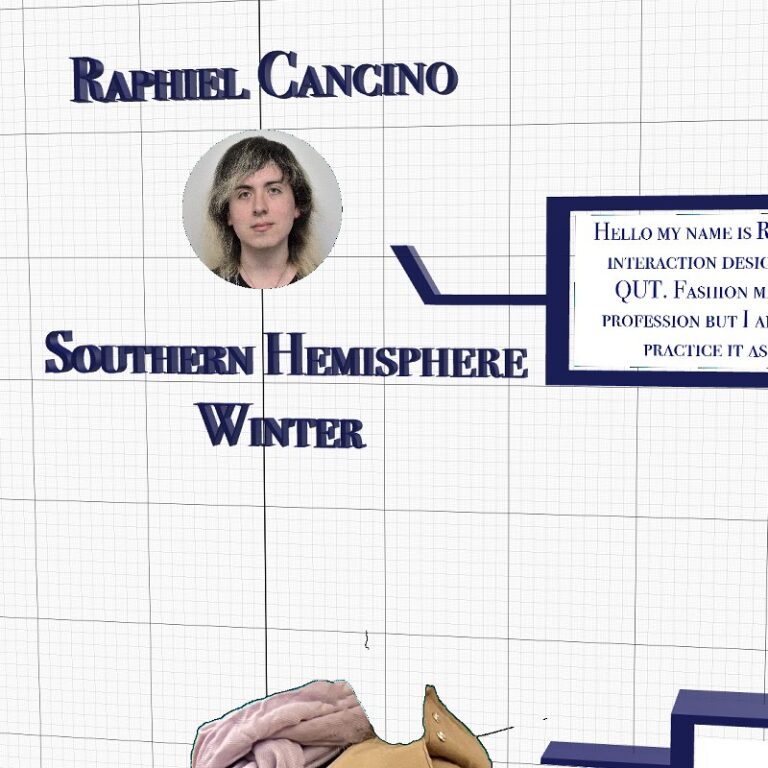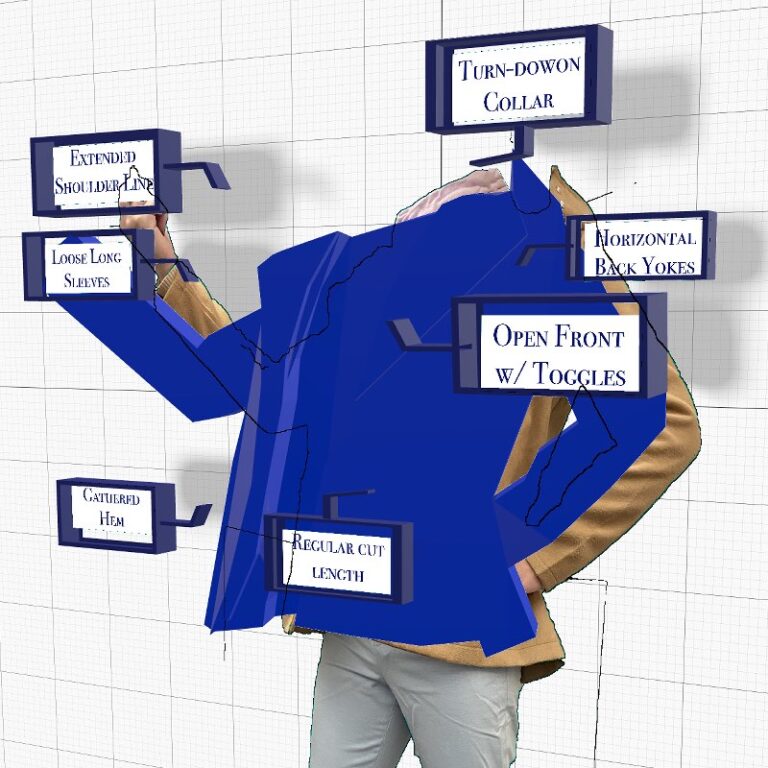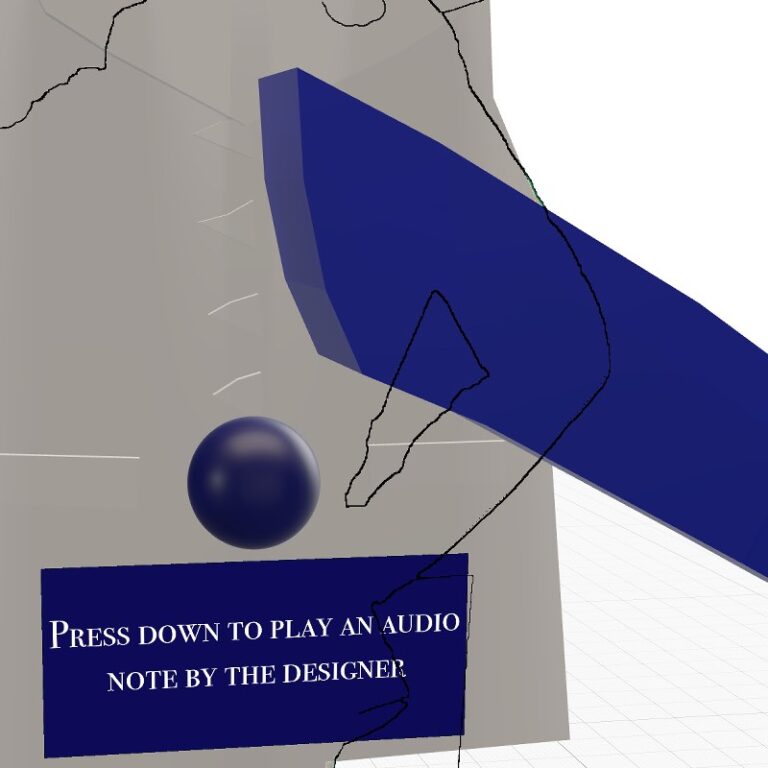Developed using
Design Process
Superimposing 2D illustrations
The idea of enhancing fashion exhibition was born from the idea of using VR/AR/MR technologies to combine fashion sketch drawing with its corresponding clothing item and superimposing its outline to be viewed in a three-dimensional space the user could explore and discover information about it. While working on designing the assets in Adobe Photoshop, the reference material being used contained more drawing and sketches produced during the garment’s design phase. They were referenced to develop the clothing patterns and outlines to showcase the fashion designer’s original conceptualization.
SCULPTING 3D MODELs
Once the 2D imagery was completed and implemented to the AR experience, it became apparent the lack of a z-axis restricted the visibility and misused the potential of moving and leaning when interacting. Using reference images and the aforementioned patterns, 3D geometrical recreations of the garment were produced inside blender and resulted in the feature of swapping its posing to differ from the original. It also resulted in the possibility of disassembling sections since the model was sculpted using individual objects for its parts (sleeves, cuffs, shoulders).
Tailoring AR exhibition
The 3D and 2D assets were imported into the AR app using Adobe dimension. By using the mobile application, placing and arranging all the elements revealed the risk of over-saturating the screen with too much information and visuals as the experience showcased the loaded information. This resulted in the simplification and consolidation of many features and assets into a more streamline version that no longer relied on free exploration, but rather a narrative guide that showed the user what the fashion designer intended to highlight or explain.
Programming ludic interactions
The platform used for the programming and running of the AR experience is Adobe Aero. Its ability to produce rapid prototyping of simple interactions and behaviors allowed to include a great amount of assets with different formats. With the inclusion of instructions and objects to touch, the user was now an active participant in the storytelling of the what, how, why, who and when of the fashion project. These interactive elements found on the final iteration include:
– Outline illustrations activated by pressing
– Digital garments activated by holding
– Geometrical buttons activated by pressing and holding
– Image slideshows activated by swiping
– Audio files activated holding
Design Insight value
This AR project was designed to be a collaboration with fashion designers to highlight the full extent their final products and the expertise behind its development. By placing the information in a digital environment, the AR experience can guide the general public through a ludic narrative that explains what goes into producing garments in the world of fashion by inciting touch-based interaction to capture engagement.
DESIGN PROCESS DOCUMENTATION

